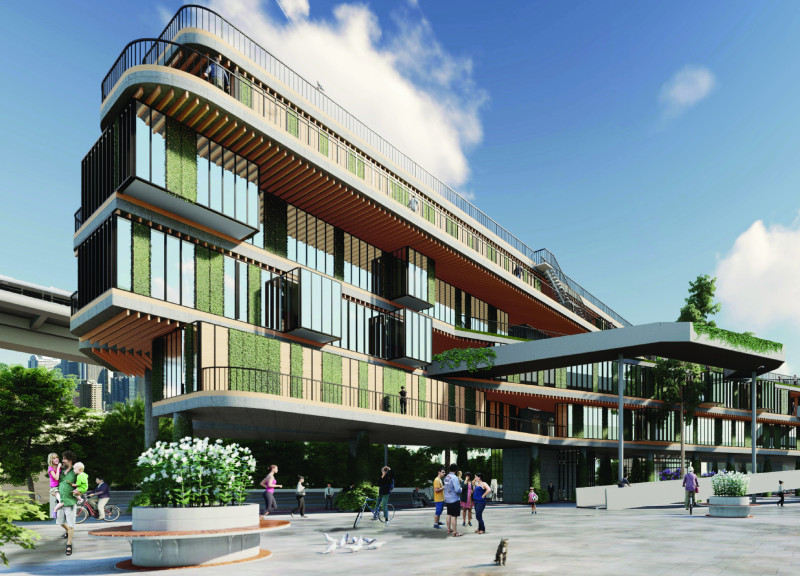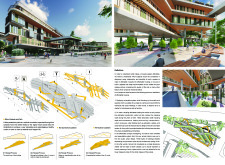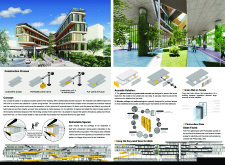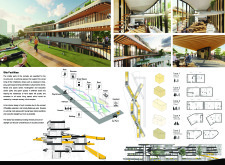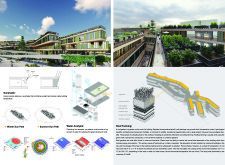5 key facts about this project
The design focuses on community living within an urban environment known for its vitality. Aimed at fostering social interactions while promoting healthy lifestyles, the complex serves as a residential space combined with amenities that enhance the quality of life. The design concept is built around modularity and flexibility, responding to the varied needs of its residents while also considering sustainability.
Design Concept and Organization
Central to the idea is a bike-pedestrian path that enables movement throughout the complex. This pathway supports an active lifestyle, allowing residents to navigate the space easily. The arrangement of buildings is based on clever pivots, specifically the "Y" and "Z" configurations. These create a central yard that encourages communal use and interaction among different parts of the development.
Affordable Housing Strategy
Affordability in this design goes beyond just lower prices; it combines quality with accessibility. The approach ensures that various occupants can enjoy their living environments. By integrating both private and public areas thoughtfully, the design promotes social connections, making it easier for residents to engage with one another and form a community.
Materials and Construction Techniques
Construction relies on prefabricated units, which help streamline the building process. Concrete slabs serve as a solid foundation for the structure. For sound control, glass facades and green walls are utilized, reducing noise and improving the environmental impact of the building.
Community Amenities
A range of facilities is incorporated into the design to enhance social interaction and convenience. These include areas for co-living, co-working, shopping, fitness, and cultural activities. This multifunctional environment supports a balanced lifestyle, allowing residents to seamlessly blend work, leisure, and social time.
Daylighting plays a crucial role in the design, with a focus on maximizing natural light within living spaces. This decision creates an inviting atmosphere and ensures that the interiors maintain a sense of openness and adaptability to different needs.


